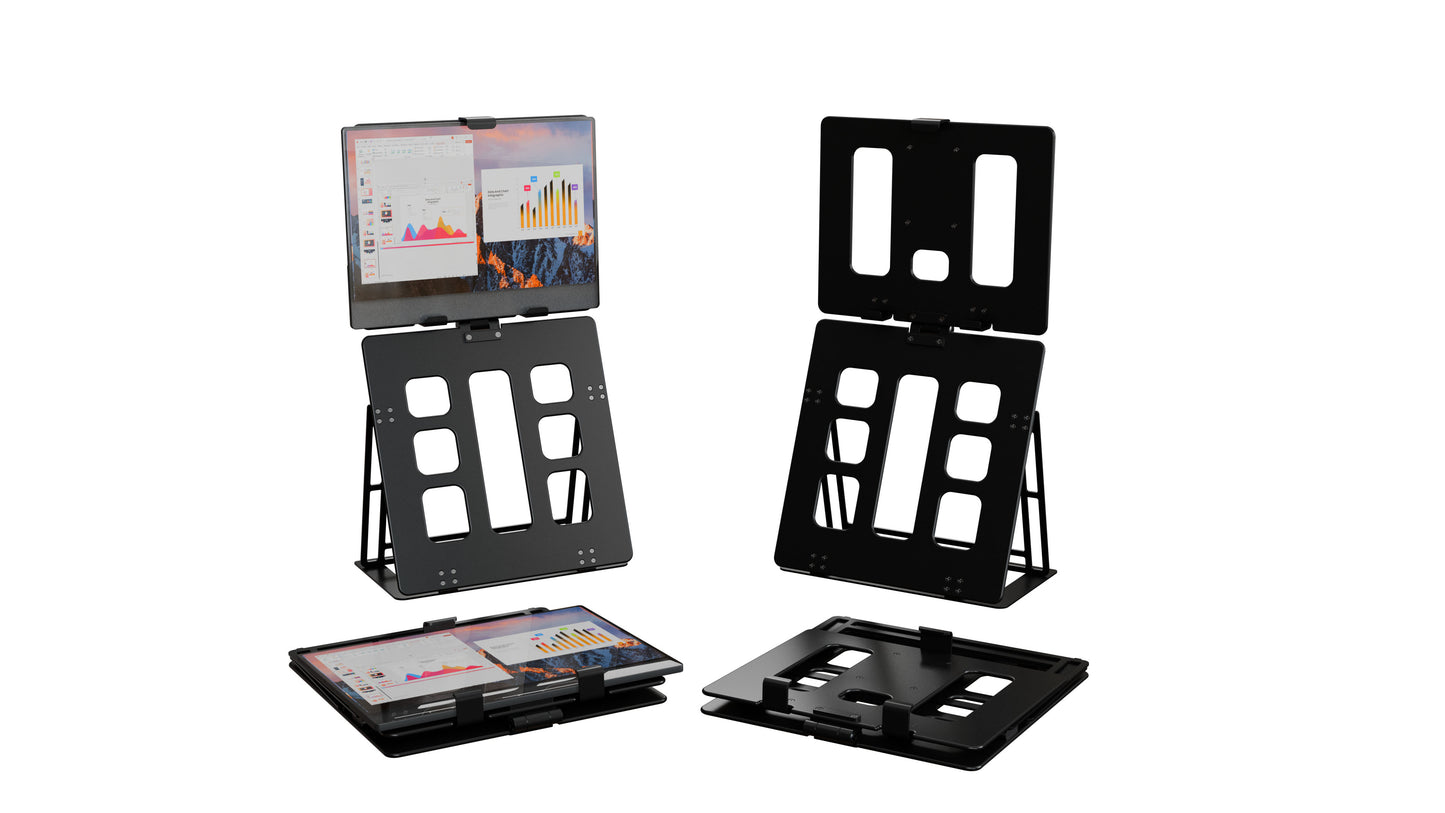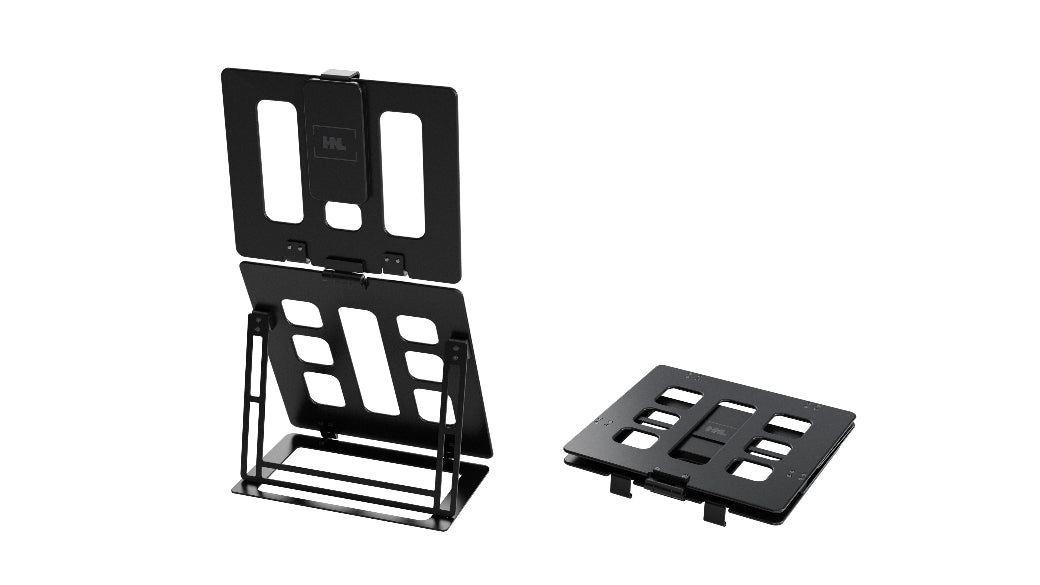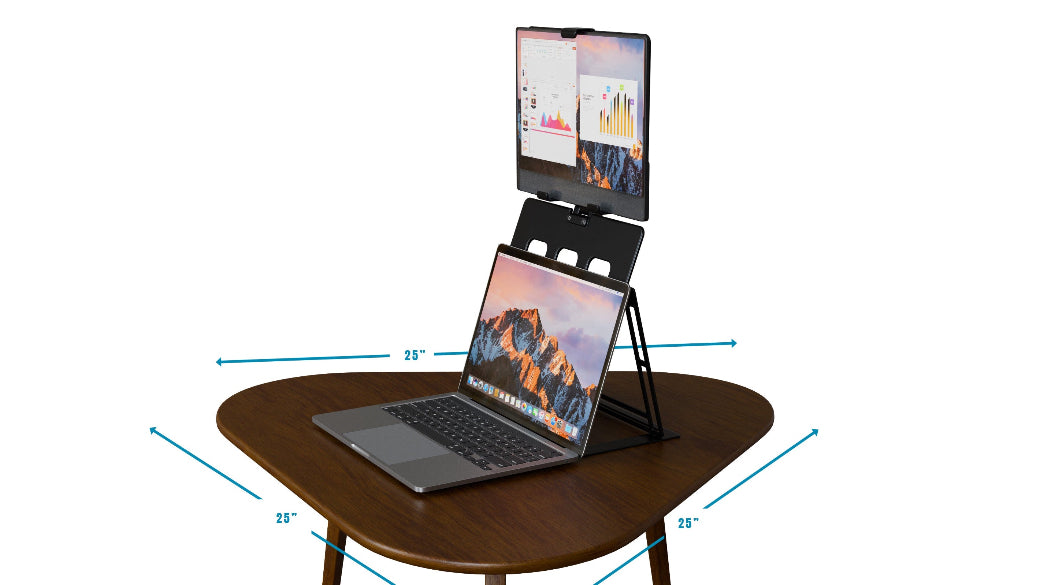
Why Top Companies Are Investing in Individualized Workstations
Share
Gone are the days when a one-size-fits-all approach to workstation design was sufficient. Today, leading organizations recognize that their greatest asset is their people, and that investing in their well-being directly correlates with enhanced performance and long-term success. This realization is driving a significant shift in corporate ergonomic policies, leading top companies to increasingly prioritize and invest in individualized workstations. This blog will explore the compelling reasons behind this strategic investment, showcasing how employee-focused offices are shaping the future of work.
The Imperative of Ergonomics in Modern Corporate Strategy
For decades, ergonomics was often viewed as a compliance issue or a cost center. However, forward-thinking operations managers and HR executives now understand its strategic value. A generic workstation fails to account for the vast diversity in human body types, working styles, and individual needs. This oversight leads to:
- Increased Discomfort and Pain: Leading to higher absenteeism and presenteeism (being at work but unproductive due to discomfort).
- Reduced Focus and Productivity: Constant physical discomfort diverts cognitive resources away from work tasks.
- Higher Rates of Workplace Injuries: Resulting in increased workers' compensation claims and associated costs.
- Decreased Morale and Engageme
- nt: Employees feel undervalued when their physical well-being is not adequately addressed.
In competitive talent markets, such as those found in US growing corporate sectors, these negatives directly impact a company's ability to attract and retain top talent.
The Advantages of Individualized Workstations
Investing in individualized workstations moves beyond basic ergonomic compliance to a philosophy of proactive employee empowerment. This means providing customized office equipment that can be tailored to each employee's unique needs, preferences, and tasks.
Key advantages include:
- Boosted Productivity and Efficiency: When an employee is comfortable and their workstation is optimized for their specific tasks, they experience fewer distractions from pain or discomfort, leading to sustained focus and higher output. They can perform their jobs more efficiently and effectively.
- Reduced Health Costs and Absenteeism: Proactive ergonomic interventions significantly reduce the incidence of musculoskeletal disorders (MSDs) like back pain, neck strain, and carpal tunnel syndrome. This translates directly to fewer sick days, lower healthcare costs, and reduced workers' compensation claims.
- Enhanced Employee Morale and Engagement: Employees feel valued and cared for when their company invests in their comfort and well-being. This fosters a sense of loyalty, boosts morale, and increases engagement, leading to a more positive and collaborative work environment.
- Improved Talent Retention and Attraction: In a competitive job market, companies offering superior working conditions and a commitment to employee well-being stand out. This makes it easier to attract top talent and, crucially, to retain existing high-performers, significantly impacting retention through ergonomics.
- Cultivating a Culture of Wellness: Prioritizing individualized ergonomics sends a clear message about a company's commitment to its employees' long-term health. This helps cultivate a broader culture of wellness that extends beyond the desk, reinforcing the company as an employee-focused office.
The Impact of Individualized Workstations on Corporate Metrics
The decision to invest in individualized workstations is increasingly data-driven. The ROI is evident in key corporate metrics.
| Metric Impacted | Before Individualized Workstations | After Individualized Workstations (Targeted Impact) | Strategic Value for Corporate Management |
|---|---|---|---|
| Employee Productivity | Suboptimal due to discomfort, distraction, and potential pain. Leading to reduced focus and lower output per hour. | Significant improvement (e.g., 10–20% increase for some tasks) due to enhanced focus, reduced pain, and streamlined workflow. | Direct contribution to revenue growth and operational efficiency. Supports meeting aggressive business targets. |
| Absenteeism Rates | Higher frequency of sick days due to musculoskeletal issues, headaches, and general discomfort-related ailments. | Noticeable reduction (e.g., 15–25% decrease in discomfort-related absences) as employees experience fewer physical issues. | Lower operational costs associated with covering absent employees, maintaining workflow continuity, and improving overall workforce stability. |
| Employee Turnover | Higher turnover rates due to job dissatisfaction stemming from poor working conditions and physical discomfort. | Significant reduction (e.g., 5–10% decrease in voluntary turnover for a mid-sized company) as employees feel valued and comfortable, increasing loyalty. | Reduced costs associated with recruitment, onboarding, and training. Preservation of institutional knowledge. Enhances employer brand reputation. |
| Workers' Compensation Claims | Increased claims related to ergonomic injuries (e.g., carpal tunnel, back strain). | Substantial decrease (e.g., 20–40% reduction in claims for ergonomic-related injuries) due to preventative measures and proper equipment. | Direct cost savings on insurance premiums, legal fees, and administrative burden. Improves workplace safety and compliance. |
| Employee Engagement | Lower engagement levels due to perceived lack of care for employee well-being and persistent discomfort. | Marked increase in engagement as comfort and support contribute to greater job satisfaction and a sense of being valued. | Fosters a positive culture, higher innovation, team collaboration, and alignment with employee-focused office goals. |
Data represents generalized trends observed across companies investing in advanced ergonomic solutions. Specific ROI can vary.
The Role of Smart Ergonomic Solutions
The core of individualized workstations lies in flexible, adaptable equipment. This includes:
- Adjustable Standing Desks: Allowing employees to seamlessly switch between sitting and standing, promoting dynamic movement.
- Ergonomic Chairs: Providing comprehensive lumbar, arm, and neck support tailored to individual body dimensions.
- Monitor Arms: Enabling precise adjustment of monitor height, depth, and angle to reduce eye and neck strain.
- Ergonomic Keyboards and Mice: Designed to minimize repetitive strain injuries.
- These are not just items of furniture; they are strategic tools that empower employees to perform at their best, aligning with sophisticated employee productivity strategies.
Conclusion
In an increasingly competitive global landscape, top companies understand that success hinges on the vitality and effectiveness of their workforce. Investing in individualized workstations is a powerful testament to an organization's commitment to its employees' well-being, translating directly into tangible business advantages. By prioritizing corporate ergonomic policies that champion customized office equipment, companies are not just buying furniture; they are investing in reduced costs, higher productivity, stronger retention through ergonomics, and a thriving, employee-focused office culture.
At HNL-Stands, we are at the forefront of this workspace evolution. We specialize in high-quality monitor stands that support the evolving needs of modern workspaces. Our solutions are built to support your staff's health, comfort, and productivity, empowering operations managers and HR executives to implement effective employee productivity strategies and foster a truly employee-focused office.
Ready to elevate your corporate strategy through superior workspace solutions? Visit or contact us today to partner on creating individualized workstations that drive success and retention!
FAQs
What does "individualized workstations" mean for a company?
It means providing employees with office equipment, particularly desks, chairs, and accessories, that can be adjusted and customized to fit their unique body dimensions, preferred working posture (sitting, standing), and specific job tasks, rather than a generic, one-size-fits-all setup.
How do individualized workstations improve employee productivity?
When a workstation is tailored to an individual, it reduces physical discomfort, pain, and strain. This allows employees to maintain focus for longer periods, experience fewer distractions, and perform tasks more efficiently, directly leading to increased productivity and higher quality output.
Can investing in ergonomics truly impact employee retention?
Yes, significantly. When companies invest in ergonomic policies and equipment, it signals a strong commitment to employee well-being. This makes employees feel valued, increases job satisfaction, reduces physical discomfort that might lead them to seek other employment, and enhances the company's reputation as a desirable place to work, aiding retention through ergonomics.
What role do operations managers and HR executives play in this investment?
Operations managers are crucial in assessing logistical needs, budgeting, and implementing the physical changes to the workspace. HR executives are vital in developing corporate ergonomic policies, communicating benefits to employees, managing wellness programs, and recognizing the impact on recruitment and employee productivity strategies.
Is it expensive to implement individualized workstations across a large company?
While there's an initial investment, the long-term ROI often far outweighs the cost. Savings come from reduced absenteeism, lower workers' compensation claims, increased productivity, and improved employee retention. Many solutions, like standing desk converters, offer significant benefits for a relatively modest investment per employee.











